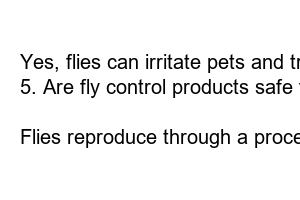날파리 제거방법
Title: How to Get Rid of Pesky Flying Flies: A Comprehensive Guide
Introduction:
Flying flies can be a nuisance, buzzing around your living space and contaminating your food. Dealing with these persistent pests can be a challenge, but fear not! In this blog post, we will provide you with effective methods to banish these flying pests from your home.
Subheadings:
1. Understanding Common Types of Flying Flies
Different types of flies inhabit various environments. The most prevalent ones include fruit flies, houseflies, and gnats. Knowing which type of fly you’re dealing with can help you select the most appropriate extermination method.
2. Prevention is Key
To keep flies from entering your home, it is crucial to implement preventive measures. **Seal any gaps or cracks** around windows and doors, use screens on windows, and **keep your living space clean** to discourage flies from breeding.
3. Homemade Fly Traps
Crafting your own fly traps using household items is a cost-effective and efficient method. Mix apple cider vinegar with a few drops of dish soap and leave it uncovered near areas where flies gather. The sweet scent attracts flies, and the soap breaks the surface tension, causing them to sink into the solution.
4. Natural Fly Repellents
Certain scents repel flies naturally. **Essential oils** such as lavender, peppermint, and eucalyptus can be diluted with water and sprayed around your home. **Planting herbs like basil, mint, and rosemary** near entrances is also an effective deterrent.
5. Commercial Fly Control Products
If homemade remedies do not provide the desired results, consider using commercial fly control products such as **fly traps, fly strips, or electric fly swatters**. Choose products labeled as non-toxic to keep your living environment safe.
6. Outdoor Fly Control
To prevent flies from breeding outdoors and invading your home, eliminate any standing water sources, clean up pet waste promptly, and **properly dispose of rotting organic matter**. Applying fly repellent spray before outdoor activities can also help shield against flies.
7. Consulting Professional Pest Control Services
If the fly infestation persists despite your best efforts, it may be time to call in professionals. Pest control experts have the resources and expertise to identify the source of the problem and implement effective solutions to eradicate the flies entirely.
Summary:
Getting rid of flying flies doesn’t have to be a daunting task. By understanding the different types of flies, implementing preventive measures, creating homemade fly traps or using natural repellents, and considering commercial fly control products or professional pest control services, you can reclaim your home from these pesky invaders. Remember, consistency and patience are key to achieving long-lasting fly-free environments.
FAQs:
1. How long do flies live?
Flies typically have a lifespan of about two to four weeks, depending on species and environmental conditions.
2. Can flies transmit diseases?
Yes, flies can carry and transmit diseases such as salmonella, E. coli, and even parasitic infections.
3. What attracts flies?
Flies are attracted to various things, including food waste, fruits, and vegetables, decaying organic matter, and warm environments.
4. Can flies be harmful to pets?
Yes, flies can irritate pets and transmit diseases. It is essential to keep your pets protected from flies.
5. Are fly control products safe for children?
Many fly control products are designed to be non-toxic and safe for use around children. However, it is crucial to read and follow the instructions on the product labels.
6. How do flies reproduce?
Flies reproduce through a process called oviposition, where females lay eggs on suitable food sources. These eggs then hatch into larvae, commonly known as maggots, which eventually develop into adult flies.

